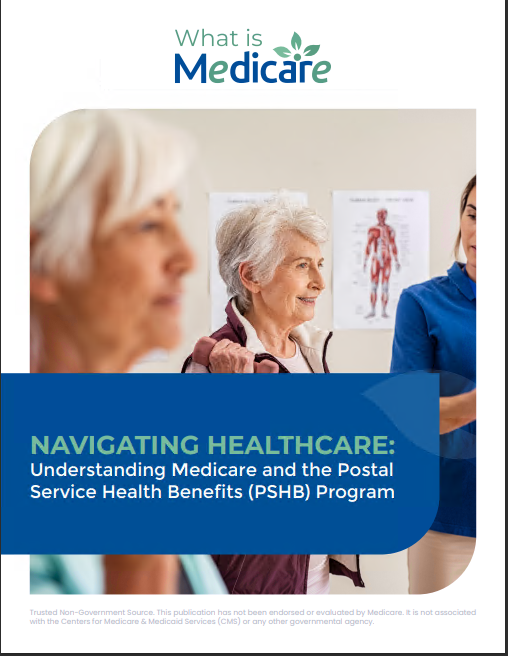Key Takeaways:
- Medicare Part D’s 2025 changes will eliminate the “donut hole,” making prescription drugs more affordable for enrollees.
- Out-of-pocket costs will be capped at $2,000 annually, helping beneficiaries manage high medication expenses more predictably.
Goodbye, Donut Hole: Medicare’s Big Changes to Part D Coverage in 2025
Medicare is heading into 2025 with significant changes to its prescription drug coverage under Part D. For years, one of the most talked-about pain points in Medicare’s drug plan has been the coverage gap, or “donut hole.” Starting in 2025, this gap will be a thing of the past. This major shift is a result of the Inflation Reduction Act, which aims to simplify the way Medicare beneficiaries pay for prescription drugs and reduce the financial burden that often accompanies high medication costs.
These upcoming changes promise to reshape how seniors and other beneficiaries manage their healthcare expenses. Let’s explore what this means, how it will work, and the positive impact it’s expected to have on millions of Americans.
What Was the Donut Hole?
The “donut hole” refers to a gap in Medicare Part D coverage that occurred after beneficiaries exceeded their initial drug coverage limit but had not yet reached catastrophic coverage. In simpler terms, this gap left many Medicare enrollees paying a higher percentage of their prescription drug costs out of pocket. Historically, once a person’s total drug costs exceeded a certain amount, they entered the donut hole, during which they were responsible for paying a larger portion of their drug costs—25% for brand-name drugs and 37% for generics—until they spent enough to qualify for catastrophic coverage.
While the donut hole has gradually closed in recent years—thanks to the Affordable Care Act, which reduced the percentage enrollees had to pay—the gap still caused significant out-of-pocket costs for many beneficiaries. But come 2025, the donut hole will finally be eliminated altogether.
What’s Changing in 2025?
The elimination of the donut hole is just one piece of a broader set of reforms to Medicare Part D under the Inflation Reduction Act. These changes aim to provide more predictable and manageable prescription drug costs for Medicare beneficiaries.
1. $2,000 Annual Out-of-Pocket Cap
One of the biggest changes coming in 2025 is the introduction of a $2,000 annual out-of-pocket spending cap on prescription drugs for Medicare Part D enrollees. This is the first time in Medicare’s history that such a cap has been introduced, providing significant financial relief for those who take costly medications. Currently, Medicare beneficiaries can face thousands of dollars in out-of-pocket costs annually, particularly if they require expensive brand-name medications or a combination of treatments.
Once enrollees hit the $2,000 threshold, they won’t have to pay any more for their covered prescription drugs for the remainder of the year. This is a significant change, as there was previously no cap on out-of-pocket spending for Medicare Part D drugs. The cap will reset annually, providing greater financial predictability for beneficiaries.
2. Elimination of the Donut Hole
As mentioned earlier, 2025 will mark the official end of the donut hole. This means that after reaching their deductible and initial coverage phase, beneficiaries will move directly into catastrophic coverage once they hit the $2,000 out-of-pocket limit. There will no longer be a middle “coverage gap” phase where they would have been responsible for a higher percentage of their drug costs.
The removal of the donut hole simplifies the Medicare Part D structure and ensures that beneficiaries won’t face sudden spikes in their prescription costs. This change is especially beneficial for those with high drug expenses who may have previously fallen into the coverage gap early in the year, facing months of inflated drug costs before reaching catastrophic coverage.
3. Reduced Costs for High-Cost Medications
In addition to the annual cap and the elimination of the donut hole, the Inflation Reduction Act also includes provisions aimed at reducing the cost burden of high-priced medications. For those with high drug costs, the $2,000 out-of-pocket cap provides immediate relief. Previously, beneficiaries could end up paying thousands of dollars out of pocket, even in the catastrophic coverage phase. By capping out-of-pocket costs, Medicare is providing substantial savings for those reliant on expensive treatments.
For example, many cancer treatments and specialty drugs can carry staggering out-of-pocket costs. Under the current system, even after reaching catastrophic coverage, beneficiaries could be responsible for 5% of the drug’s cost, which can still amount to thousands of dollars. But starting in 2025, once beneficiaries hit the $2,000 cap, their prescription costs will be fully covered for the rest of the year, removing this financial strain.
4. Flexibility in Payment Options
Another key change to Part D in 2025 is the introduction of more flexible payment options for beneficiaries. Instead of being required to pay their entire out-of-pocket costs upfront or within a few months, beneficiaries will have the option to spread these payments out over the course of the year. This new feature, called “smoothing,” allows for easier budgeting and can help beneficiaries avoid large lump-sum payments early in the year when they may hit the $2,000 cap quickly due to expensive medications.
This option is especially helpful for those who are managing multiple health conditions and juggling various costs, making it easier to handle their out-of-pocket expenses over time.
5. Continued Focus on Reducing Drug Prices
While the changes to Medicare Part D in 2025 focus on out-of-pocket costs, they’re also part of a broader effort to bring down prescription drug prices overall. The Inflation Reduction Act includes provisions that allow Medicare to negotiate the prices of certain high-cost medications. While this negotiation process will begin in 2026, it’s important to note that the changes to Part D coverage are laying the groundwork for these future cost reductions.
For beneficiaries, this means that not only will their out-of-pocket costs be capped at $2,000 starting in 2025, but they could also see lower drug prices in the coming years as Medicare’s negotiating power takes effect. This could lead to more affordable medications across the board, benefiting millions of Americans.
How These Changes Will Impact Medicare Beneficiaries
The upcoming changes to Medicare Part D in 2025 are designed to make prescription drugs more affordable and predictable for millions of Americans. For many beneficiaries, the elimination of the donut hole and the introduction of a $2,000 cap will provide much-needed financial relief, particularly for those who rely on expensive medications to manage chronic or life-threatening conditions.
More Predictable Costs
One of the primary benefits of these changes is the ability for Medicare beneficiaries to better predict and manage their prescription drug costs. With a $2,000 cap in place, enrollees won’t face the uncertainty of potentially unlimited out-of-pocket spending, making it easier to budget for their healthcare expenses.
Better Access to Necessary Medications
High out-of-pocket costs have long been a barrier to medication access for some Medicare beneficiaries. The elimination of the donut hole and the introduction of an annual cap will remove much of this barrier, ensuring that more people can afford the medications they need without worrying about falling into a coverage gap or facing catastrophic costs.
Long-Term Savings
While the 2025 changes will provide immediate savings for Medicare enrollees, they also lay the groundwork for long-term savings as Medicare negotiates lower drug prices. These changes represent a significant shift toward making healthcare more affordable for seniors and people with disabilities, addressing both short-term financial concerns and long-term prescription drug pricing.
Looking Ahead: A Brighter Future for Medicare Part D
The changes to Medicare Part D in 2025 mark a turning point in the program’s history. The elimination of the donut hole, coupled with the introduction of an out-of-pocket spending cap, signals a more beneficiary-friendly approach to prescription drug coverage. For millions of Americans, these changes mean greater financial stability, better access to medications, and a healthcare system that is more responsive to their needs.
As we look ahead to 2025 and beyond, it’s clear that Medicare is evolving to meet the challenges of rising drug costs and the complex healthcare needs of its beneficiaries. With these reforms, Medicare Part D is becoming a more effective and equitable program, offering real relief to those who need it most.








